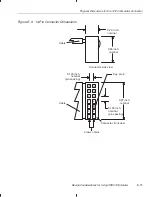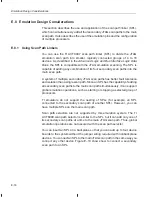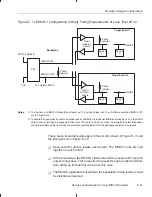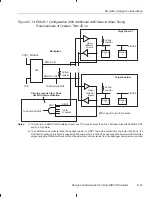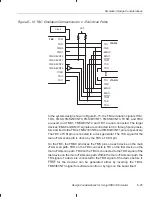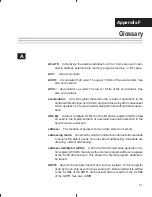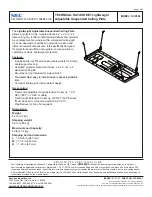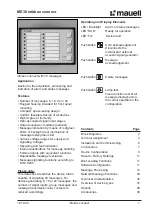
Connections Between the Emulator and the Target System
E-11
Design Considerations for Using XDS510 Emulator
Figure E–5. Emulator Connections With Signal Buffering
VCC
Emulator header
VCC
GND
12
10
8
6
4
5
GND
GND
GND
GND
GND
PD
TCK_RET
TCK
TDO
TDI
TMS
TRST
EMU1
EMU0
9
11
7
3
1
2
14
13
JTAG device
TCK
TDO
TDI
TMS
TRST
EMU1
EMU0
Greater than
6 inches
The EMU0 and EMU1 signals must have pullup resistors connected to V
CC
to
provide a signal rise time of less than 10
µ
s. A 4.7-k
Ω
resistor is suggested for
most applications.
The input buffers for TMS and TDI should have pullup resistors connected to
V
CC
to hold these signals at a known value when the emulator is not con-
nected. A resistor value of 4.7 k
Ω
or greater is suggested.
To have high-quality signals (especially the processor TCK and the emulator
TCK_RET signals), you may have to employ special care when routing the
printed wiring board trace. You also may have to use termination resistors to
match the trace impedance. The emulator pod provides optional internal paral-
lel terminators on the TCK_RET and TDO. TMS and TDI provide fixed series
termination.
Because TRST is an asynchronous signal, it should be buffered as needed to
ensure sufficient current to all target devices.



















